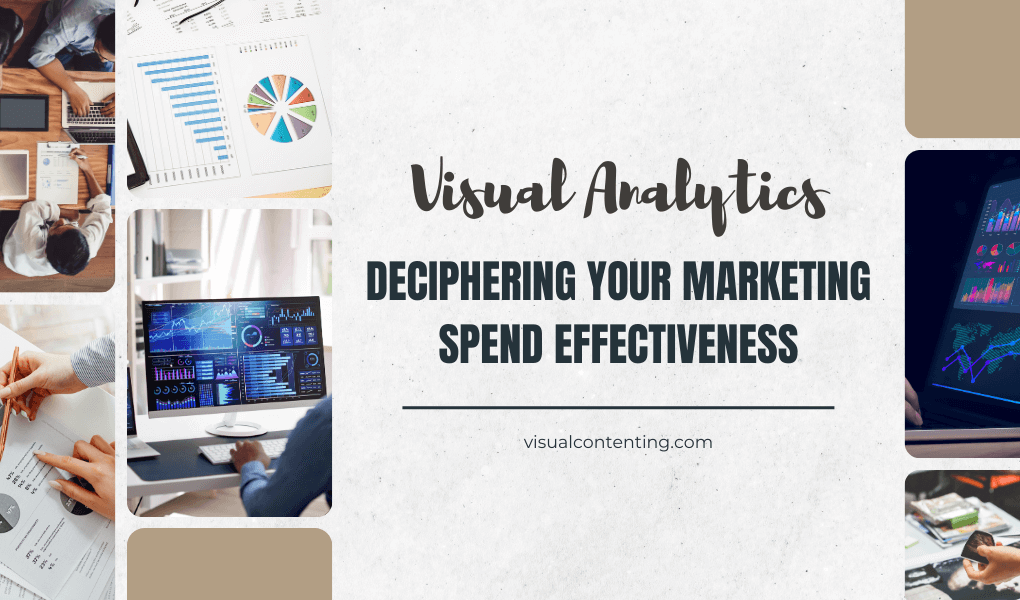Data is everywhere, awashing marketers with information that ranges from demographics to customer journey insights. Marketers often use this information to share it in reports and guide decision-makers toward the best outcomes. Yet, while the information is valuable, its complexity can overwhelm even the most experienced marketers.
Understanding and extracting meaningful insights from these vast data sets can be challenging. That is why many turn to visual analytics — it turns complex data into easy-to-understand images. Yet, for visual analytics to work, marketers must set it up the right way.
How Visual Analytics Tools Work and Their Importance
A visual analytics tool converts raw data into compelling imagery, enabling marketers to interpret their marketing performance. It compiles data from various sources into a unified dashboard. Once it collects the data, it processes it using machine learning algorithms to identify patterns and trends. It then presents the result visually, allowing marketers to spot correlations and anomalies that influence decision-making.
These tools are crucial for marketers to make faster, more informed decisions. With visuals, marketers can see which campaigns perform well and where adjustments are necessary. This is especially important now that 79.8% of the top 10 companies are increasing digital ad spend due to cookie depreciation.
Marketers need insights to uncover strategies that optimize marketing spend and campaign performance. With more clarity into complex data sets, teams can ensure they make better decisions and achieve better results.
Types of Visual Interpretations
Visual analytics tools offer various types of visual representation that help marketers quickly interpret data and make informed decisions:
- Dashboards: These visual representations give marketers a holistic view of campaign performance by combining multiple visualizations on a single screen. They can display key metrics like website traffic and social media engagement in real time. Dashboards also provide customizable filters that allow marketers to explore data deeply.
- Bar and line charts: Bar charts are ideal for comparing categorical data, such as campaign performance across different channels. Line charts are effective for visualizing trends over time, like ad spend and website traffic growth.
- Heat maps: These visualizations use color gradients to show data density, making them perfect for identifying website user behavior. They help marketers see which areas of a webpage get the most attention and when to make improvements.
- Scatter plots: Scatter plots show correlations between two variables, such as ad spend and conversions. They are useful for uncovering relationships that inform strategy adjustments.
- Pie charts: Pie charts visualize the proportion of different segments, such as traffic sources or customer demographics. Although simple, they provide a clear picture of data distribution.
- Funnel charts: These represent the customer journey, from awareness to conversion. Marketers use them to identify stages where potential customers drop out of the funnel.
- Geographic maps: Marketers use geographic maps to visualize location-based data. They are effective in understanding market reach and identifying growth opportunities.
Despite technology's advantages to the marketing world, keeping up with their rapid innovations can be stressful for many. In fact, 41% of company leaders cited technology as a significant source of stress in their jobs. With the visual representations available, visual analytics tools can make it easier to decipher marketing data and help marketers focus on insights that truly matter.
Best Practices for Using Visual Analytics
Visual analytics can provide numerous benefits for marketers to gain insights. However, there are some best practices to bear in mind.
1. Define Clear Objectives and Establish KPIs
Objectives and key performance indicators (KPIs) are essential for guiding direction and measuring progress. For instance, if the primary goal is to increase brand awareness, relevant KPIs include website traffic or social media reach. Clearly defined objectives and KPIs can tell you what data to look for, making visual analytics simpler.
Start by knowing the business goals and aligning the objectives accordingly. Once objectives are clear, select KPIs that align with the SMART framework (specific, measurable, achievable, relevant and time-bound). For example, a SMART KPI for brand awareness could be “increase organic website traffic by 20% over the next six months.”
Integrating these KPIs into visual dashboards is crucial for sharing with different stakeholders. Executives may prefer high-level overviews, while marketing teams need granular details to refine strategies.
2. Utilize Quality Data
Another crucial best practice is ensuring the data feeding into your visualizations is accurate and high-quality. Without quality data, marketers can experience incorrect insights, misinformed strategies and wasted marketing spending. Marketers should prioritize cleaning and standardizing their data to gain immediate insights for faster campaign strategy implementation.
Quality data starts with consolidating sources. Marketers often gather data from multiple channels, such as social media, email campaigns and website analytics, leading to inconsistencies. Aggregating data from these channels into a unified platform ensures consistency and eliminates duplication.
Despite the availability of advanced analytics tools, only 33% of marketers “strongly agree” that they gain insights fast enough to make strong decisions. Therefore, quality data is crucial for accessibility. By ensuring data accuracy, marketers can trust the visualizations they create and confidently make decisions.
3. Choose the Proper Visual Format
Different visualizations convey specific insights, so choosing the appropriate one can affect how well stakeholders interpret the data. The best way to select the right visual representation is to define the objective of your visualization. Are you trying to illustrate trends over time or showcase proportions across various segments? Knowing the main purpose will inform your conclusion and present data most compellingly.
It is also important to understand your audience and customize the visual format to their needs. It is helpful to balance detail and readability to simplify complex data into digestible information. Interactive features like drill-down capabilities can offer deeper insights without compromising clarity.
Consistency in visualizations is also crucial. By using constant color schemes, fonts and labeling, viewers can quickly recognize trends and patterns. Testing and refining the visualizations based on feedback ensures the chosen visual format maintains audience attention.
4. Identify Visual Data Trends
Finding visual data patterns is essential for accurately assessing campaign performance. The first step is to recognize the types of trends your visualizations reveal. Are they upward or downward trends, or are there sudden spikes or dips? Understanding these patterns enables marketers to gauge campaign effectiveness and adjust strategies accordingly.
To read visual data trends effectively, focus on long-term patterns rather than short-term fluctuations. For example, an upward trend in conversion rates over several months indicates a successful campaign. Meanwhile, a sudden spike could result from a one-off event like a flash sale. Line graphs are particularly useful for spotting these over time, while heat maps can highlight high-engagement areas.
Additionally, comparing trends against established benchmarks or historical data is key. This way, marketers determine whether a campaign performs better or worse than expected. Analyzing them in tandem with KPIs provides a more detailed overview of campaign effectiveness. As a result, marketers can refine their campaigns, optimize their budgets and improve the overall effectiveness of marketing spend.
5. Iterate and Optimize
Visual analytics is more than a one-and-done process — it is a continuous cycle that requires regular iteration and optimization. This helps to yield more meaningful insights and improvements. After implementing visual analytics tools and assessing initial results, refining strategies based on the data collected is crucial.
Begin by analyzing which visualizations and metrics provided the most valuable insights into marketing spend effectiveness. Did they highlight high-performing campaigns or reveal areas of overspending? Use this feedback to refine your dashboards and KPIs, ensuring they align with evolving business goals. Then, test new visual formats and experiment with different data sources to see which combinations provide deeper insights.
Optimizing marketing strategies should be an ongoing process as well. Regularly revisit campaigns to measure their effectiveness and identify new trends. For instance, a campaign that once had a high return on investment may show diminishing returns over time, prompting adjustments.
Consistency in this approach enables marketers to adapt to changing market conditions and improve marketing spending effectiveness. Therefore, keeping this best practice in mind is critical to achieving successful campaigns.
Making Visual Analytics Work for You
Visual analytics gives marketers the clarity needed to understand their marketing spend effectiveness. By following the right strategies, they can uncover valuable information to refine their approach. Continue to prioritize best practices and let visual analytics guide impactful decisions to maximize marketing return.
Related Posts
Devin Partida writes about topics concerning tech and the internet. She is also the Editor-in-Chief of ReHack.com.







